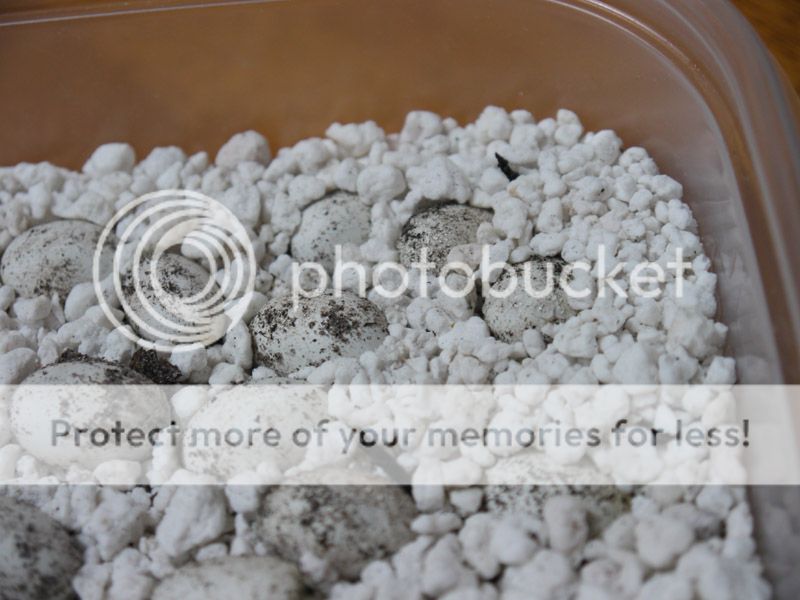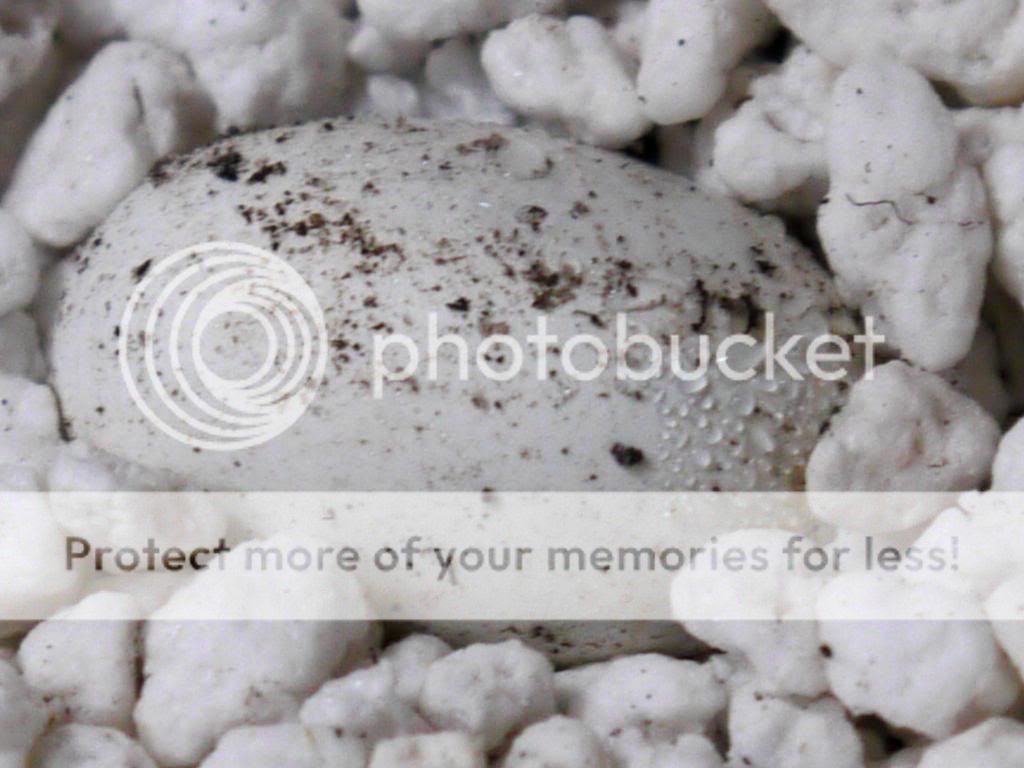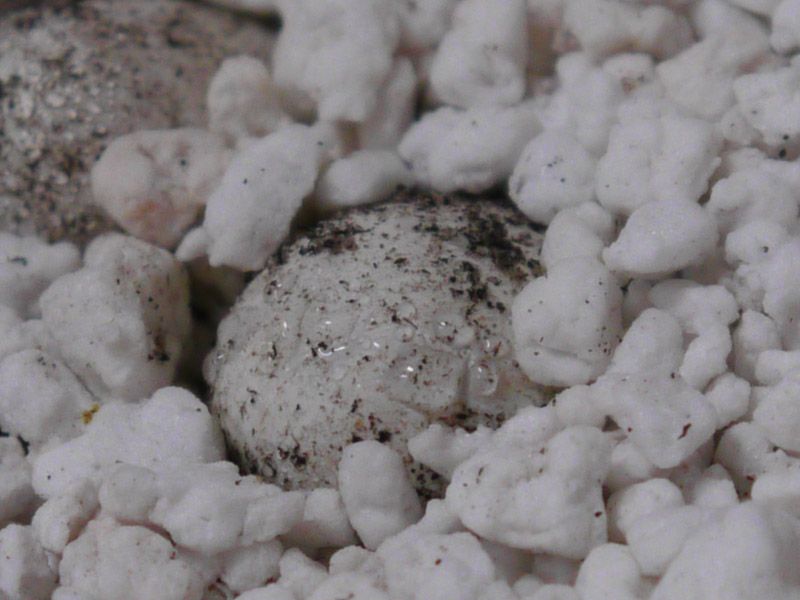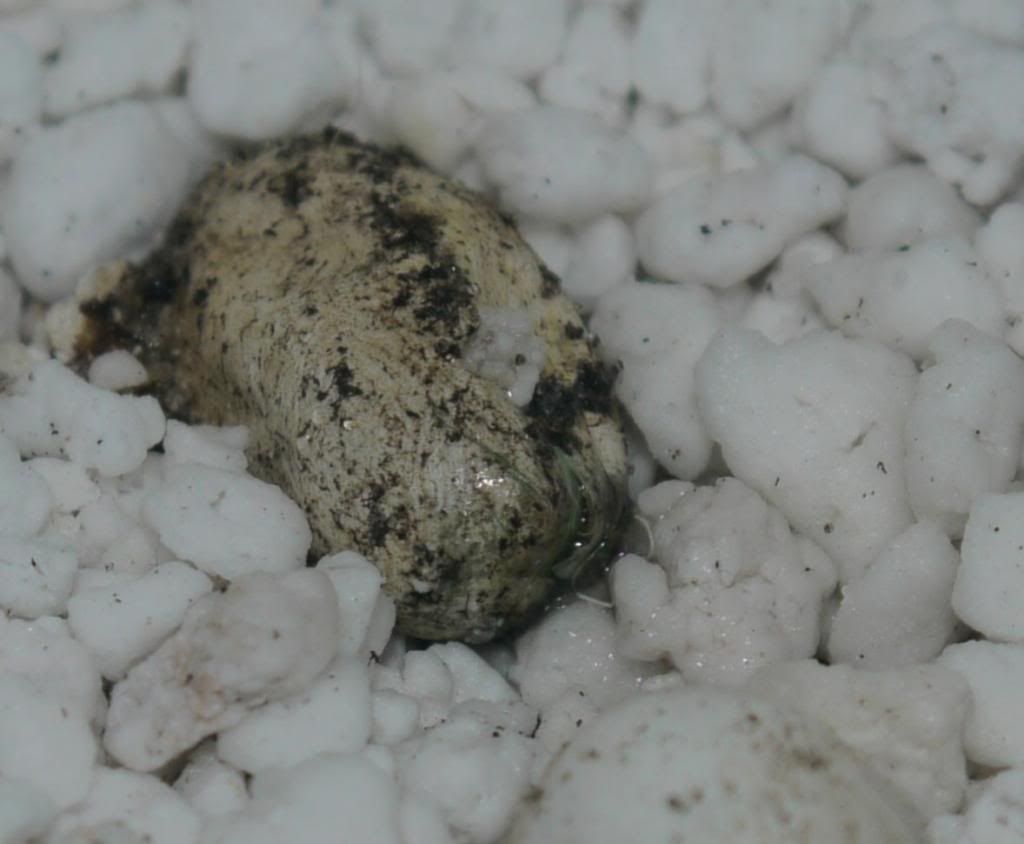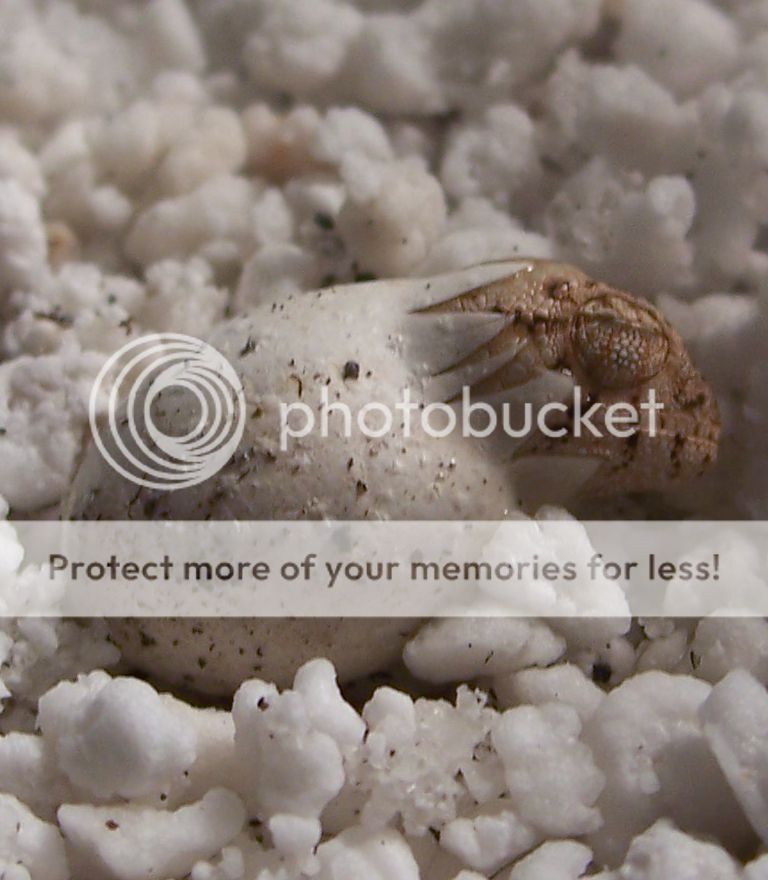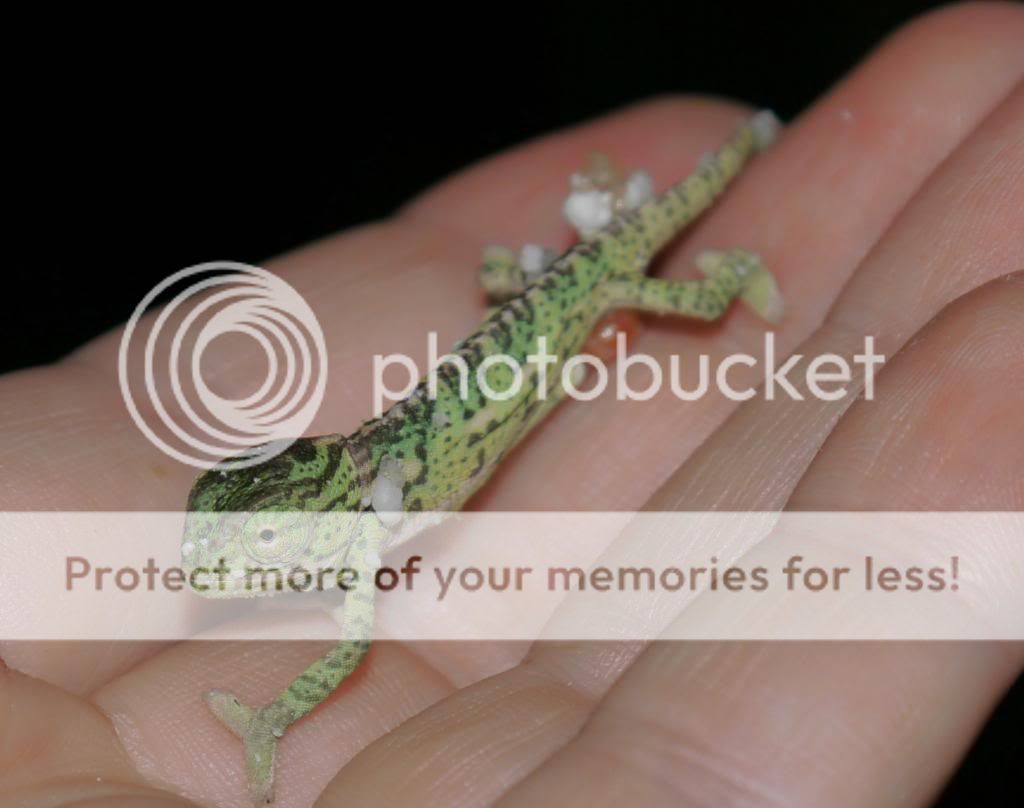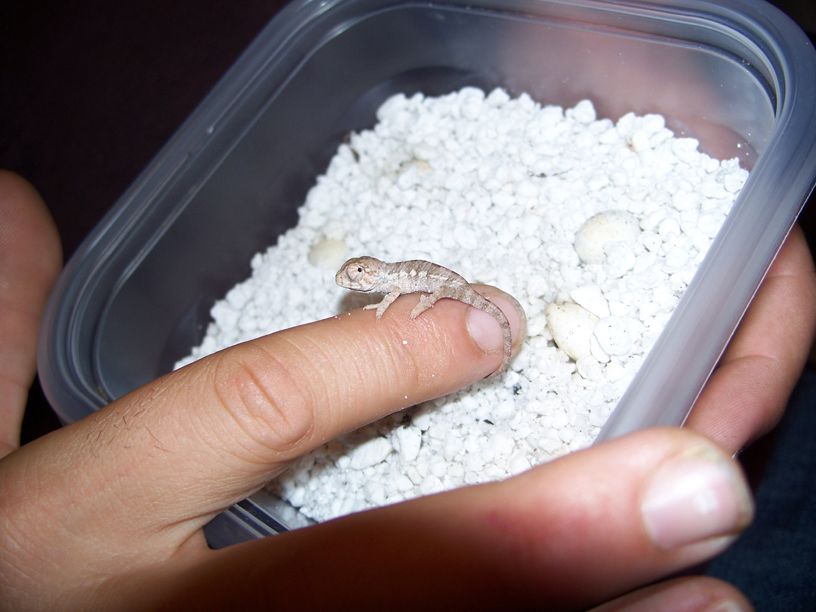Dez
Chamalot Chameleons
The following are instructions on how to candle your chameleon eggs, to check for signs of development, and what to expect closer to hatch date.
"Candling" is the technique of shining a light in the egg and looking for shadows or veins. It is often done with fertile chicken eggs as well for people hatching their own chicks.
Candling is not necessary, but it is a good way to tell the status of your incubating eggs if you are curious
*We mainly use Hatchrite (the white stuff the eggs are sitting in) for our egg medium, but I have used vermiculite as well..
Typically, chameleon eggs (veiled and panther) take between 6 to 10 months to hatch. Typical hatch time in the "closet" method is 6-7.5 months.
So lets say you have a batch of veiled eggs that have been incubating at 75-78 degrees for 6.5 months. You have noticed they have grown slightly in size but still nothing is going on...are they ready to hatch? Come on already, right?

Well, lets take a look...
To candle the eggs, you will need a small pen light.

a BRIGHT LED will work great, (but make sure it is small)

If the light is too large, then the light will bleed around the egg making it hard to see.
Step 2
Take your egg container in a darkened room so its easier to see. DO NOT remove your eggs from the container. Remember be careful not to bump or roll the eggs during this process.
Place the light on the eggs so that the light shines through the eggs like this...

SO What am I looking for????
An egg close to hatching will look solid on the bottom of the egg while the top will look hollow (the top hollow part is the air pocket and is why it is important not to roll the egg at this stage)



As you can see, light is not passing through the bottom part of the egg, because that is where the fully formed baby is. These eggs will be hatching ANY DAY and you better get ready
Eggs that have a denser bottom that are not yet solid, still have a month or so left to go before they hatch. Notice in the following photos that these eggs, although having a very noticeable denser bottom, are not as solid looking as the previous eggs. These eggs have been incubating 5.5 months and have a little while to go yet


This egg has been in incubation for 4 months. You can not yet see a solid bottom forming, but the pinking coloring and the veins let you know it is developing.

How do you know if you have a bad egg?
If you candle a freshly laid egg, you will not be able to see anything. The light will be yellowish, but there will be no shadows or veins yet.
Typically non-fertile or "bad eggs", will mold over and shrivel within the first week or two of being laid.

Fertile eggs are resistant to molding, and will look white and healthy. It is not unusual to only have few fertile eggs out of a larger batch.
Another sign you may have bad eggs, is strange coloring like these

I am not sure what exactly caused the pink spots but I assume mold from the eggs being bad.
Sometimes eggs stay looking good, but in reality they are infertile. For some reason they didn't mold.
If you candle an egg that has been in incubation for 6+ months and it looks yellow with no shadows... chances are it is a bad egg and nothing is developing inside of it.
This egg has been incubation for 6 months but still no signs of development - notice how yellow it looks


Still, do not throw out "bad eggs" unless they mold. There is a chance they COULD hatch eventually... you never know!
"Candling" is the technique of shining a light in the egg and looking for shadows or veins. It is often done with fertile chicken eggs as well for people hatching their own chicks.
Candling is not necessary, but it is a good way to tell the status of your incubating eggs if you are curious
*We mainly use Hatchrite (the white stuff the eggs are sitting in) for our egg medium, but I have used vermiculite as well..
Typically, chameleon eggs (veiled and panther) take between 6 to 10 months to hatch. Typical hatch time in the "closet" method is 6-7.5 months.
So lets say you have a batch of veiled eggs that have been incubating at 75-78 degrees for 6.5 months. You have noticed they have grown slightly in size but still nothing is going on...are they ready to hatch? Come on already, right?
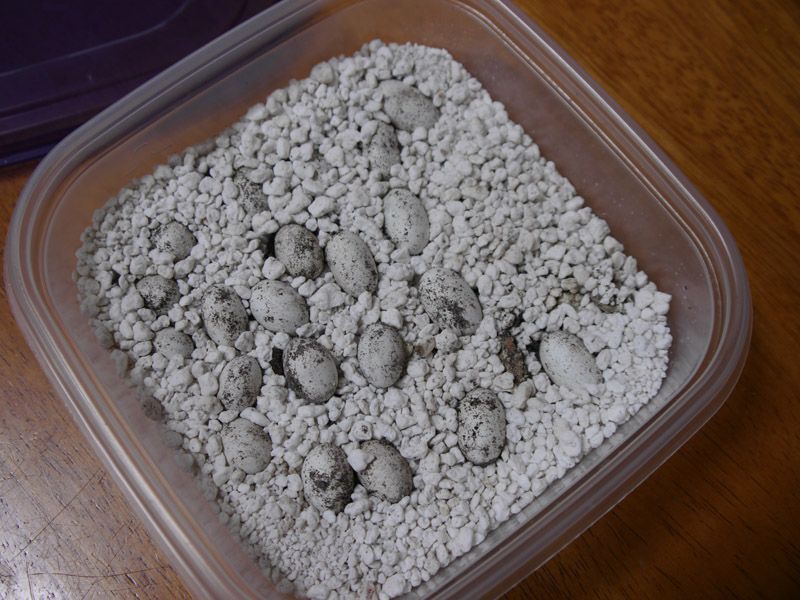
Well, lets take a look...
To candle the eggs, you will need a small pen light.
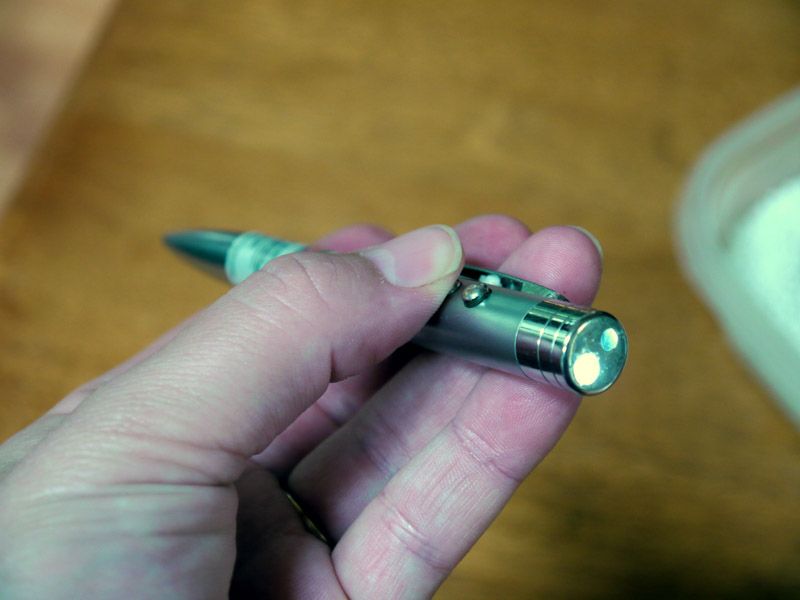
a BRIGHT LED will work great, (but make sure it is small)
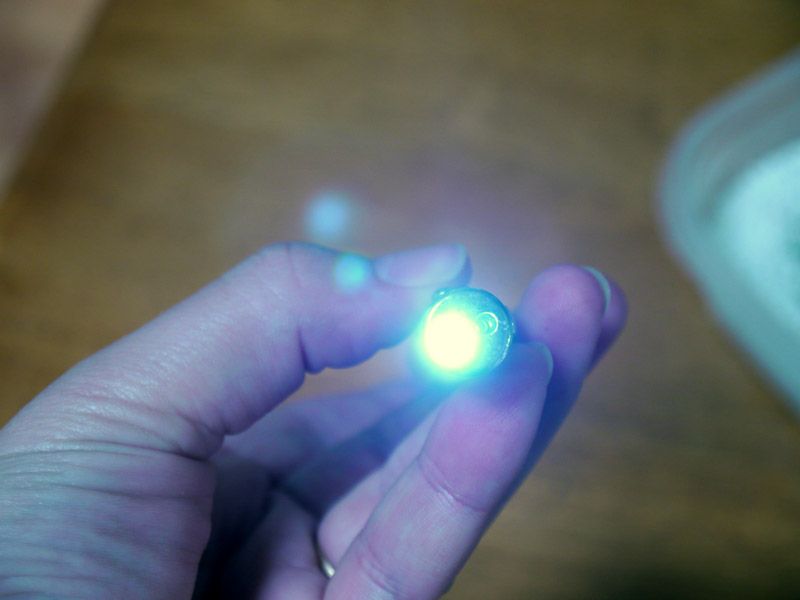
If the light is too large, then the light will bleed around the egg making it hard to see.
Step 2
Take your egg container in a darkened room so its easier to see. DO NOT remove your eggs from the container. Remember be careful not to bump or roll the eggs during this process.
Place the light on the eggs so that the light shines through the eggs like this...
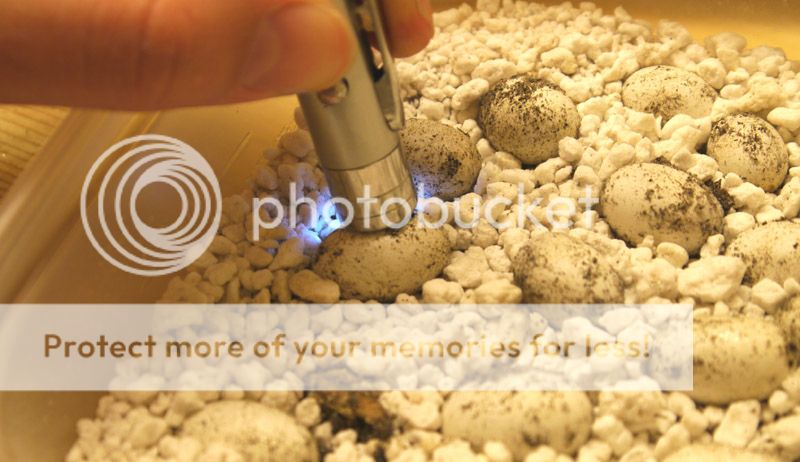
SO What am I looking for????
An egg close to hatching will look solid on the bottom of the egg while the top will look hollow (the top hollow part is the air pocket and is why it is important not to roll the egg at this stage)
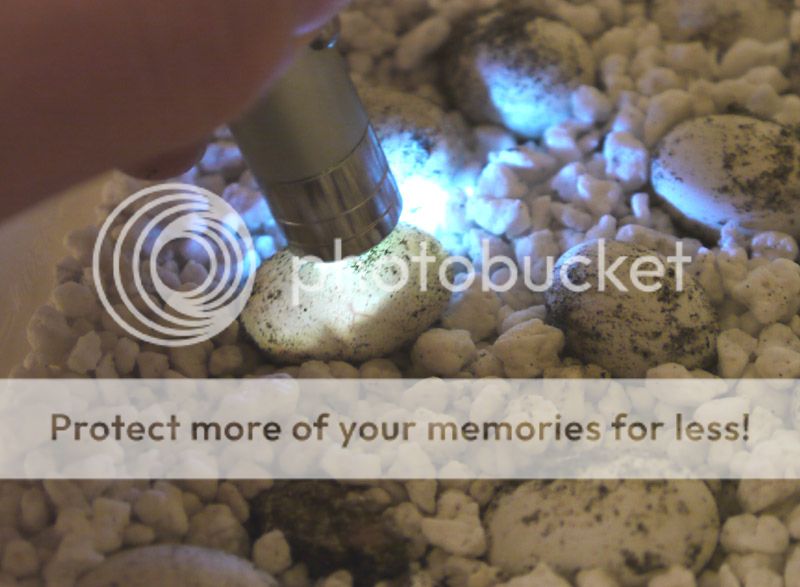
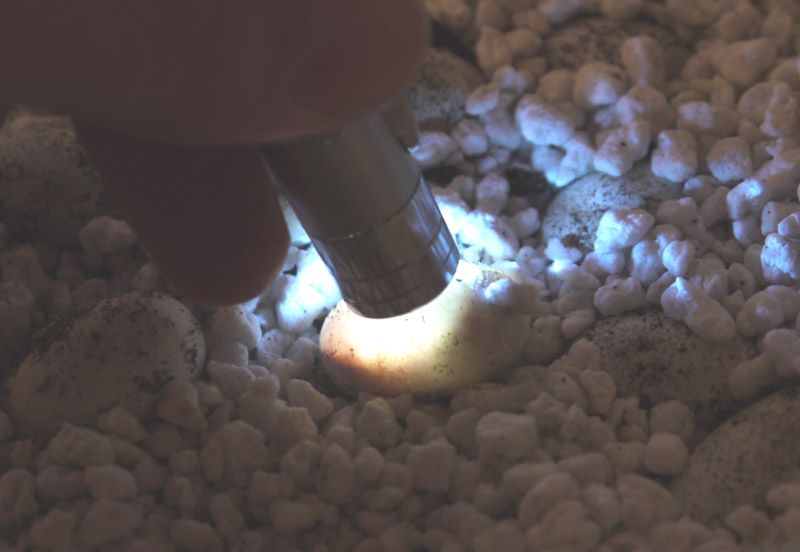
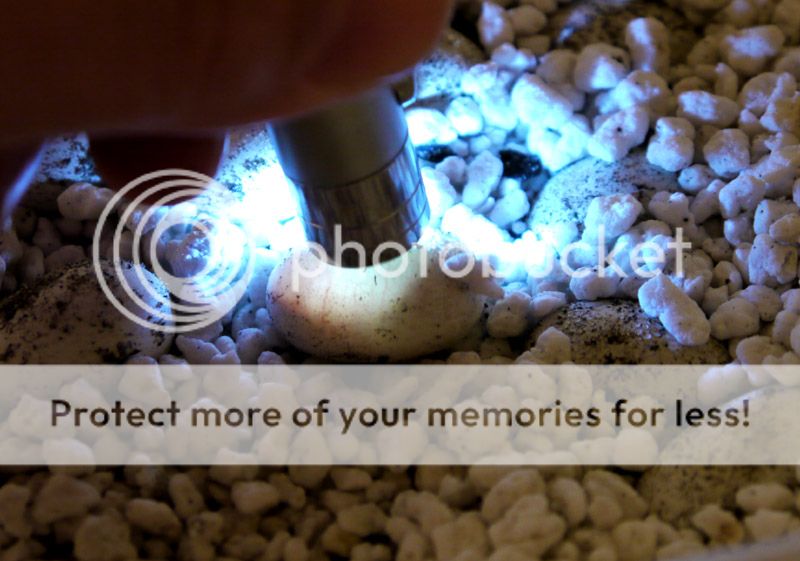
As you can see, light is not passing through the bottom part of the egg, because that is where the fully formed baby is. These eggs will be hatching ANY DAY and you better get ready
Eggs that have a denser bottom that are not yet solid, still have a month or so left to go before they hatch. Notice in the following photos that these eggs, although having a very noticeable denser bottom, are not as solid looking as the previous eggs. These eggs have been incubating 5.5 months and have a little while to go yet
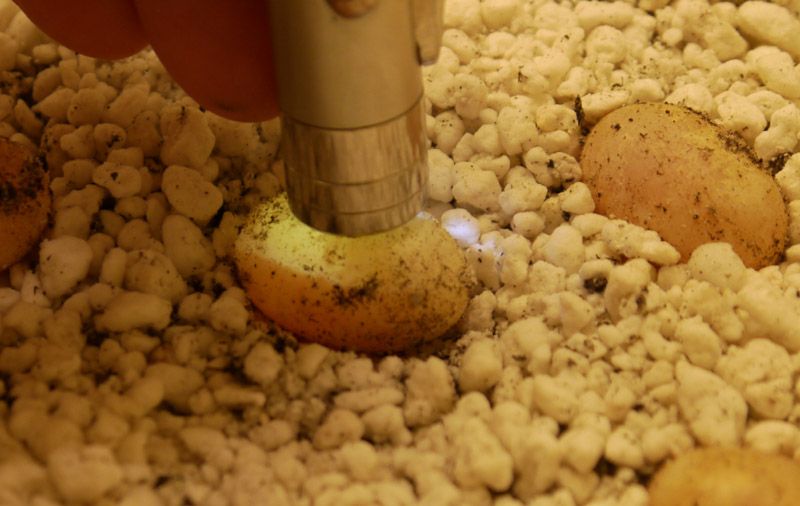
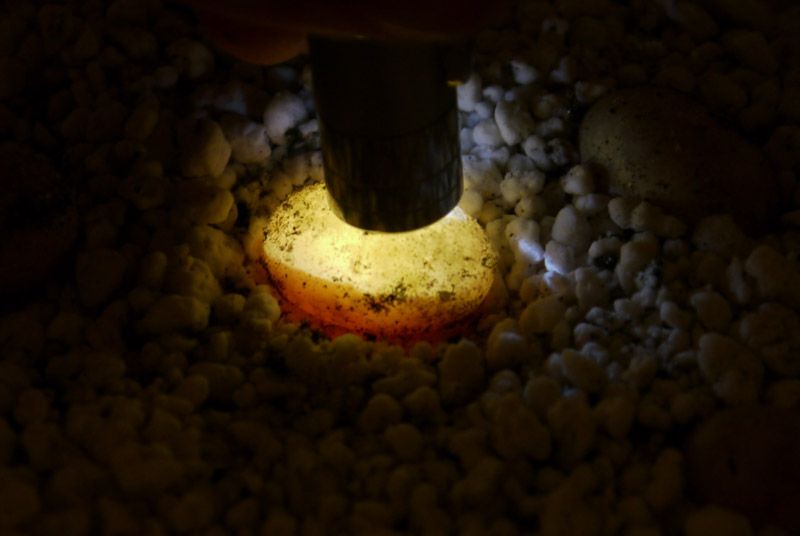
This egg has been in incubation for 4 months. You can not yet see a solid bottom forming, but the pinking coloring and the veins let you know it is developing.

How do you know if you have a bad egg?
If you candle a freshly laid egg, you will not be able to see anything. The light will be yellowish, but there will be no shadows or veins yet.
Typically non-fertile or "bad eggs", will mold over and shrivel within the first week or two of being laid.

Fertile eggs are resistant to molding, and will look white and healthy. It is not unusual to only have few fertile eggs out of a larger batch.
Another sign you may have bad eggs, is strange coloring like these
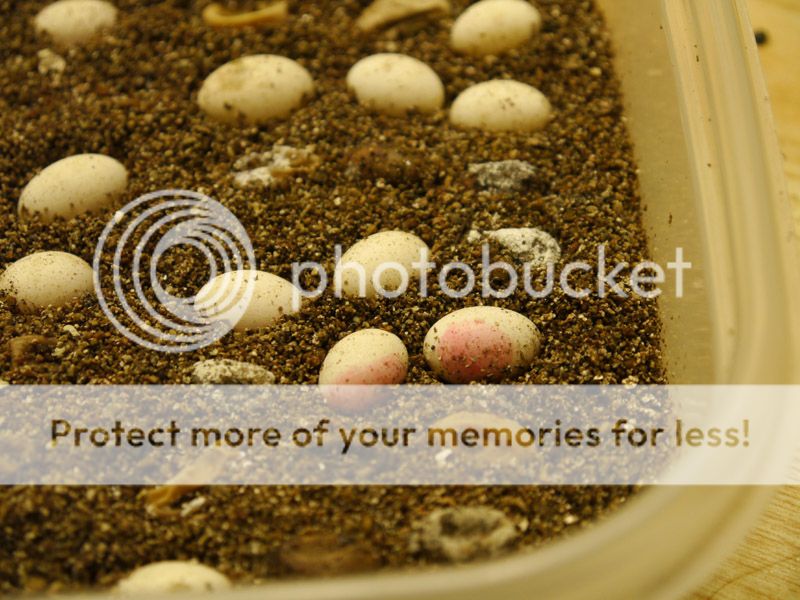
I am not sure what exactly caused the pink spots but I assume mold from the eggs being bad.
Sometimes eggs stay looking good, but in reality they are infertile. For some reason they didn't mold.
If you candle an egg that has been in incubation for 6+ months and it looks yellow with no shadows... chances are it is a bad egg and nothing is developing inside of it.
This egg has been incubation for 6 months but still no signs of development - notice how yellow it looks

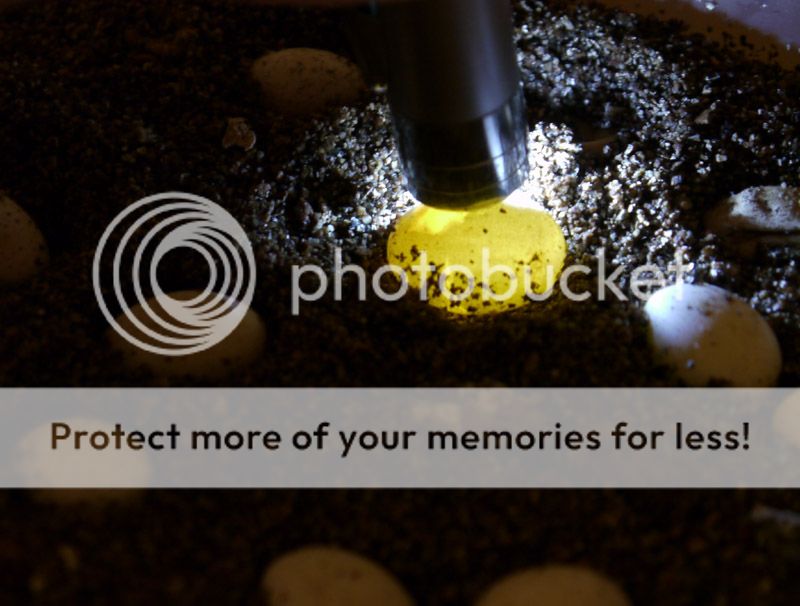
Still, do not throw out "bad eggs" unless they mold. There is a chance they COULD hatch eventually... you never know!
Last edited:




